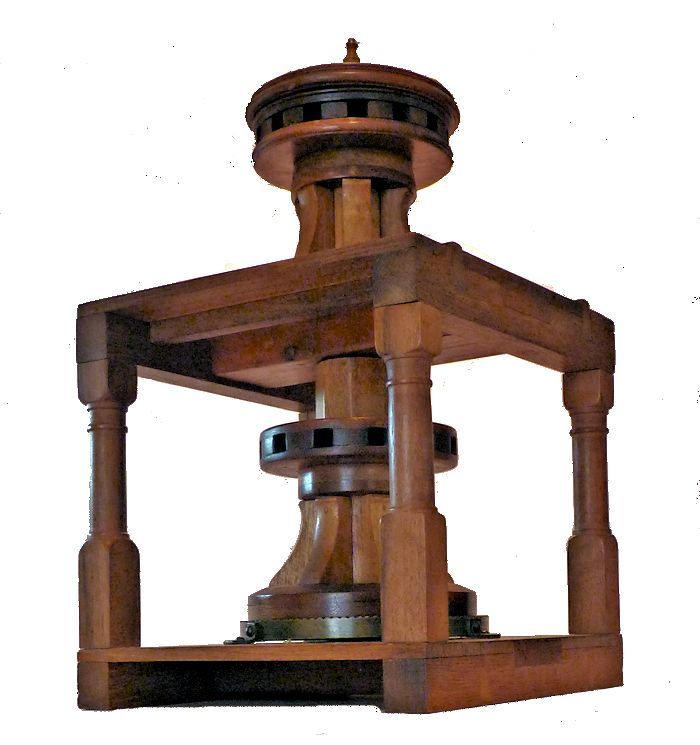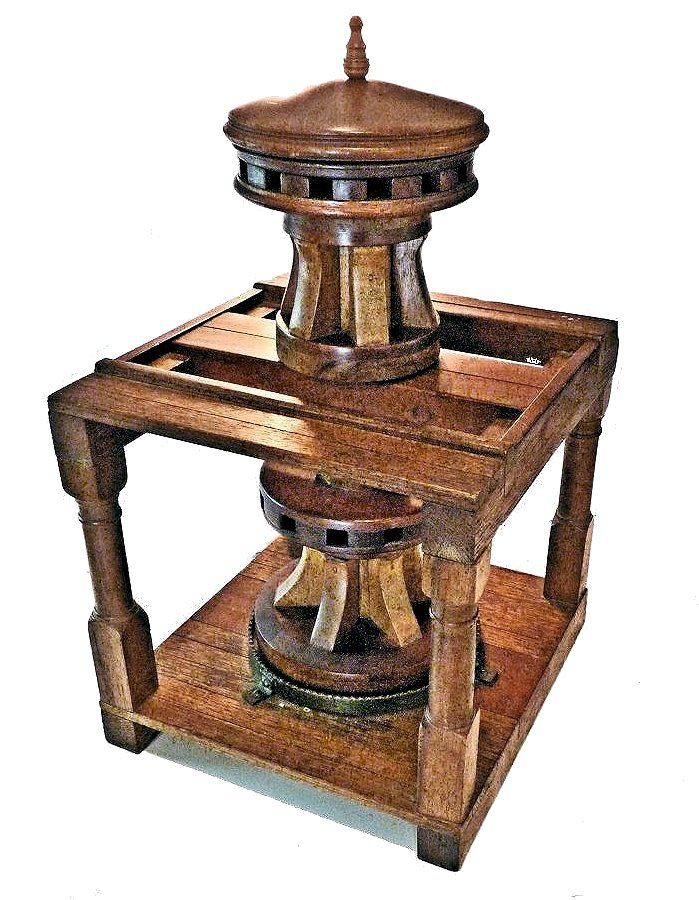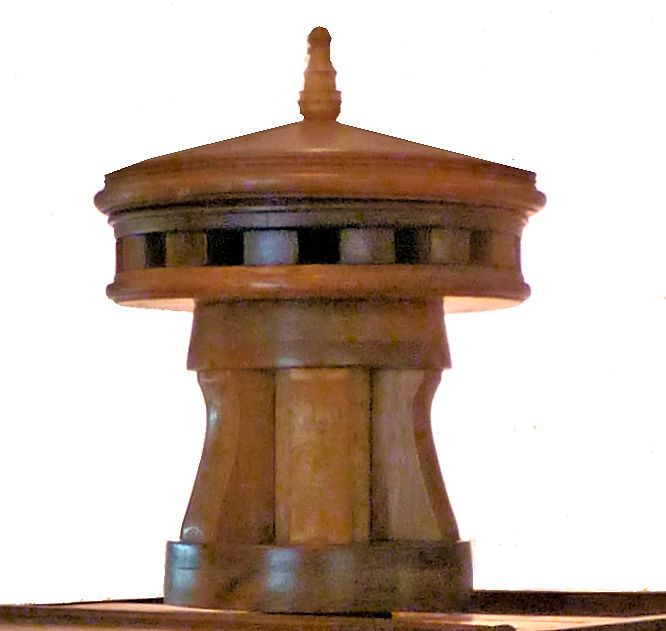MODEL OF SAILING SHIPS
DOUBLE HEADED CAPSTAN as of Ca 1805
Patent Application Model
SIZE: 10″ W x
10″ x 16″ H WEIGHT: 4
pounds
Presented is an example of a
double headed capstan that was used to raise the anchor of a sailing ship of the early 19th Century. The capstan was
driven by wood bars inserted in the notches at the head of the capstan and were turned by two or more crew at each bar.
The upper capstan was at deck level,
and was used to hoist sails and yards on the masts and moving other heavy gear. The lower capstan was inside the hull and
was used to hoist the anchor. As the size of the cable grew in diameter and became too large to wind around the center
of the capstan, a smaller line called a messenger was used. The messenger was attached to the anchor cable using small removable
lines called stoppers that gripped the anchor cable as it was raised. As the cable reached the hold access, they were
removed and the anchor cable was fed into the chain locker where it was coiled for future use. It could be a long
process depending on how much of the cable was in the water.
This type of model that could
possibly accompany a patent application except that it is missing the pawls and there is no ratcheting mechanism to hold the
drum from reversing direction. We believe it is intended to be a display model British ship’s anchor capstan. It
is finely finished with a varnish coating.
 |
|
Looking up at double headed capstan model
|
.
BELOW,
as a comparative example – THE SMTHSONIAN CAPSTAN PATENT MODEL:
The
model is made of wood with metal shafts and cogs. It measures 14″ L x 10″ H x 6 1/2″ W. Two boards joined by
four corner posts represent the decks of a vessel. On the upper deck sits a capstan (furnished with one sample capstan bar);
next to it is a shaft end, ready to receive a small gear or pinion (now missing). Between the two decks there are three vertical
shafts, each mounting one or two gears. One shaft is formed into a crank. Credit Smithsoian
Institute




